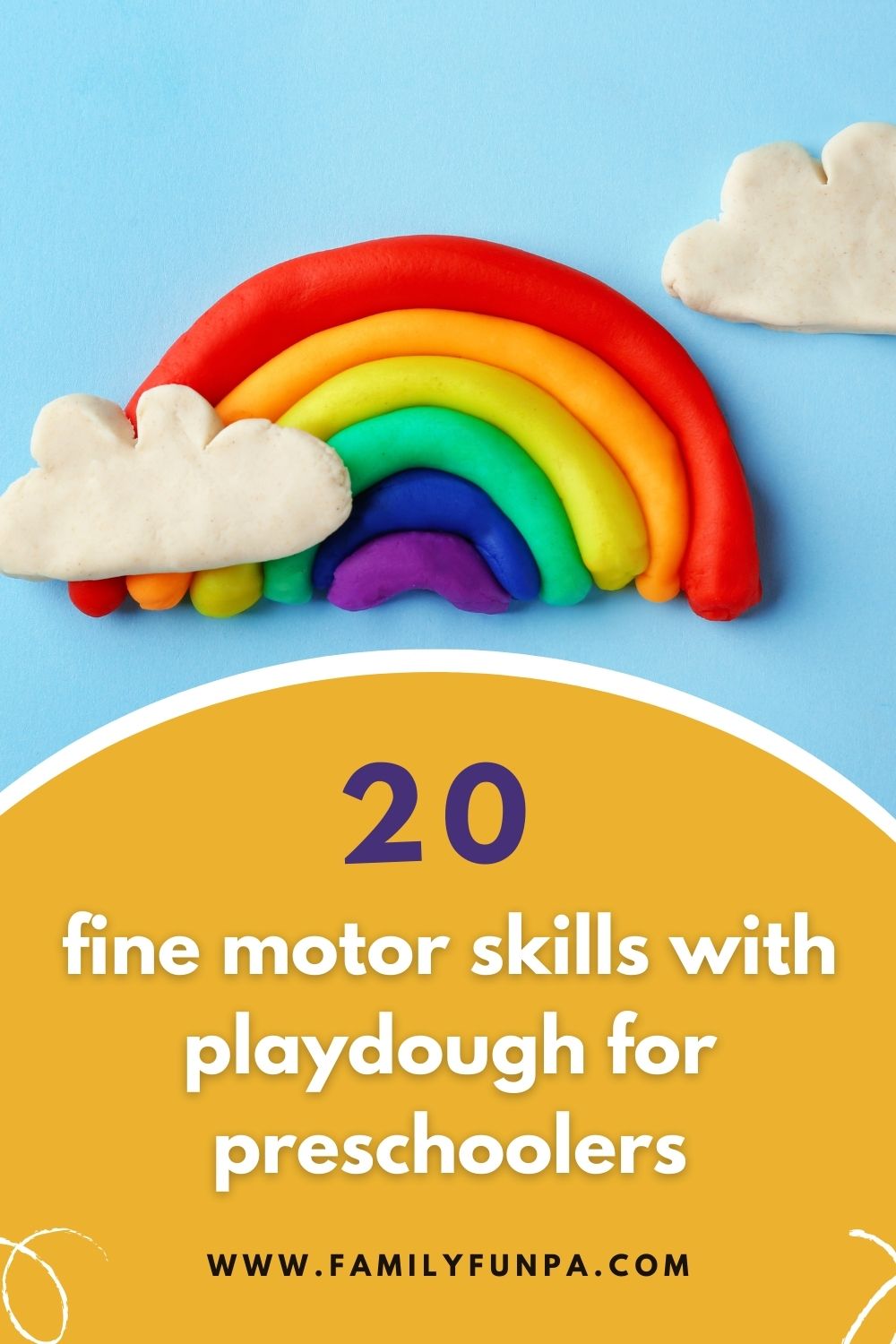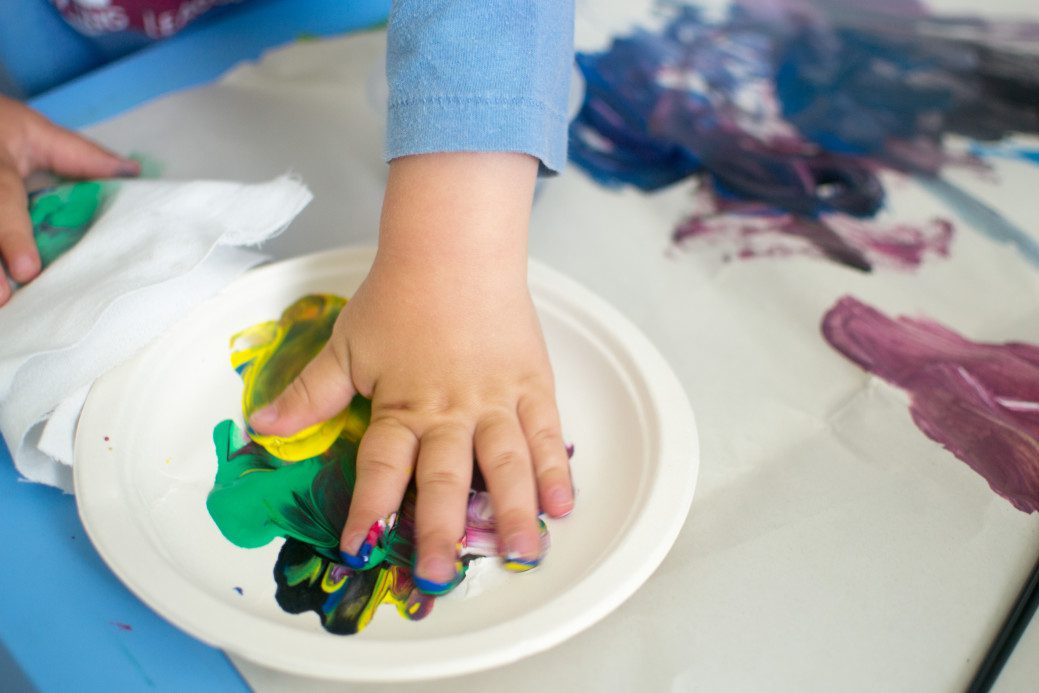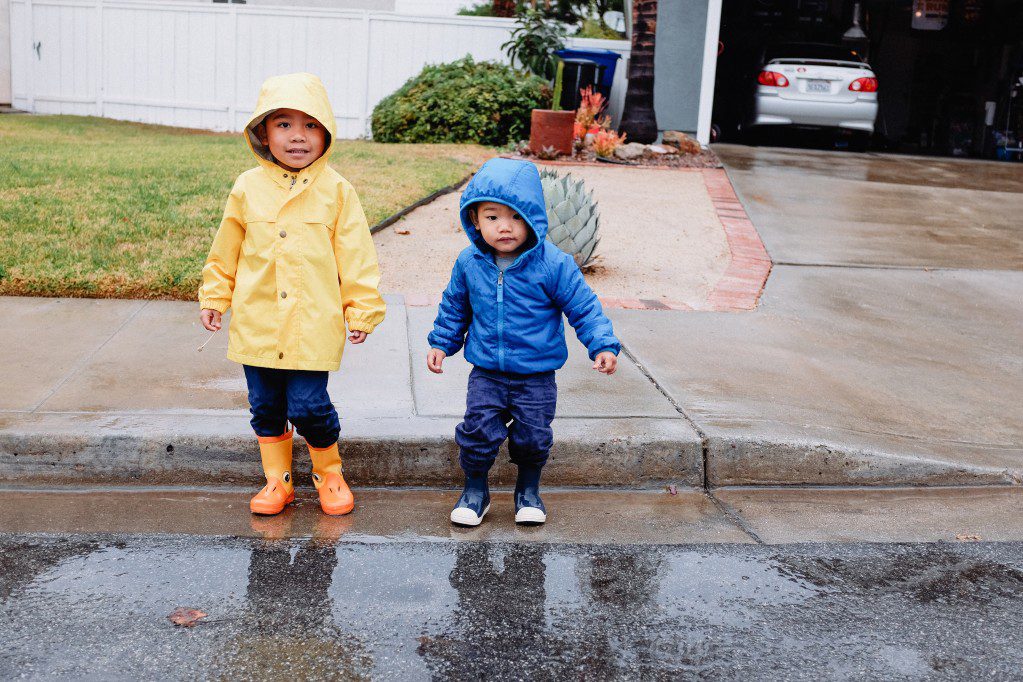It’s squishy, it’s fun and little ones develop their fine motor skills with playdough, too, with every pinch and roll they make when playing.
If you don’t mind a little mess here and there, an afternoon mixing little fingers around in squishy play dough is not only one of the most fun activities for preschoolers, but it’s also a great way for little ones to flex their fine motor muscles. Little learners have enjoyed playdough play as a staple in early childhood education for years because it helps children develop their fine motor muscles.
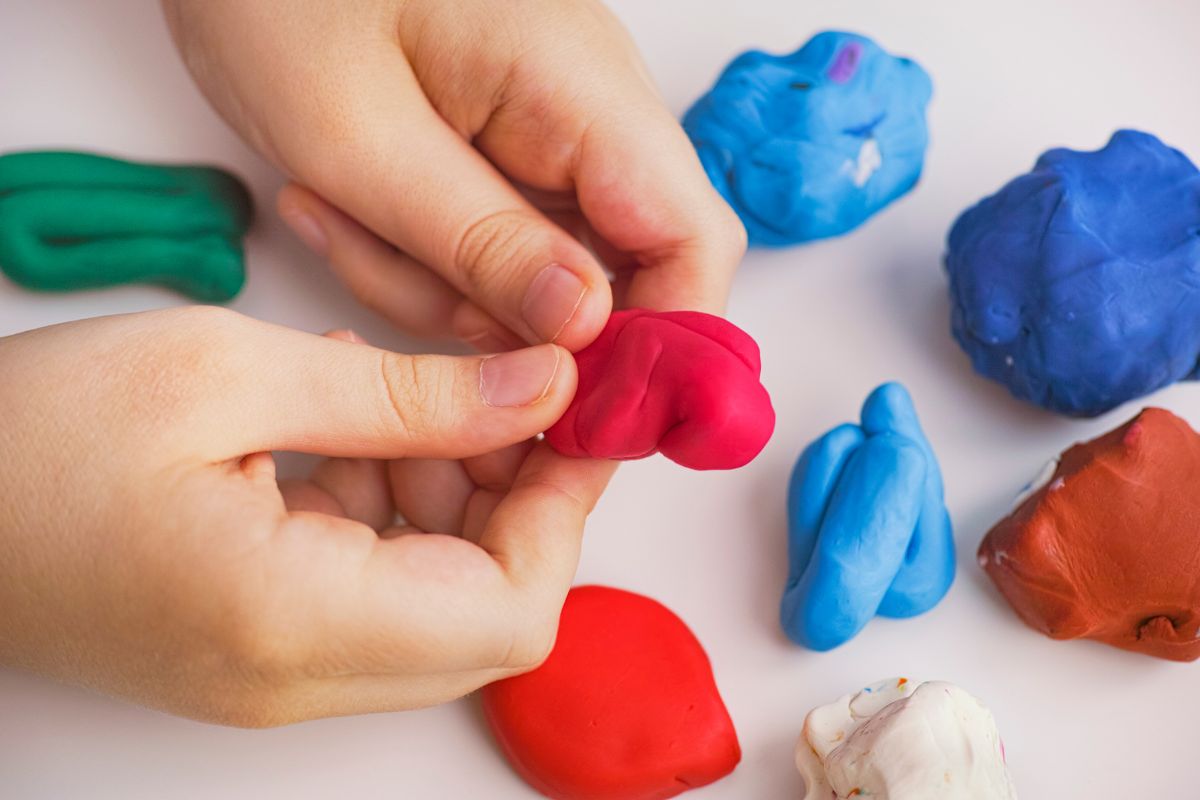

Developing fine motor muscles is crucial for young children’s overall development as it is a key component of their growth and independence. Fine motor skills refer to the use of small muscles in the hands and fingers to perform delicate movements, such as writing, grasping small objects, using scissors, and buttoning clothes.
Not only does playdough help with skills like shape and pattern recognition, but it also encourages creativity, imagination and storytelling.
Cognitive Benefits & Fine Motor Skills with Playdough
Benefits of Playdough Play
Playdough play provides a lot of benefits for children’s development. It’s a tactile way for children to explore their senses and provide sensory input. The different colors and textures of the playdough engage children’s visual and tactile senses, which is important for their sensory processing. Additionally, playdough play provides children with an opportunity to develop their language skills as they learn new words and talk about what they are doing with the play dough.
Playdough play is also a great way to promote social skills. Children can work in small groups or pairs and learn to take turns, share materials, and problem-solve together. As children create with the play dough, they can also develop their creativity and imagination.
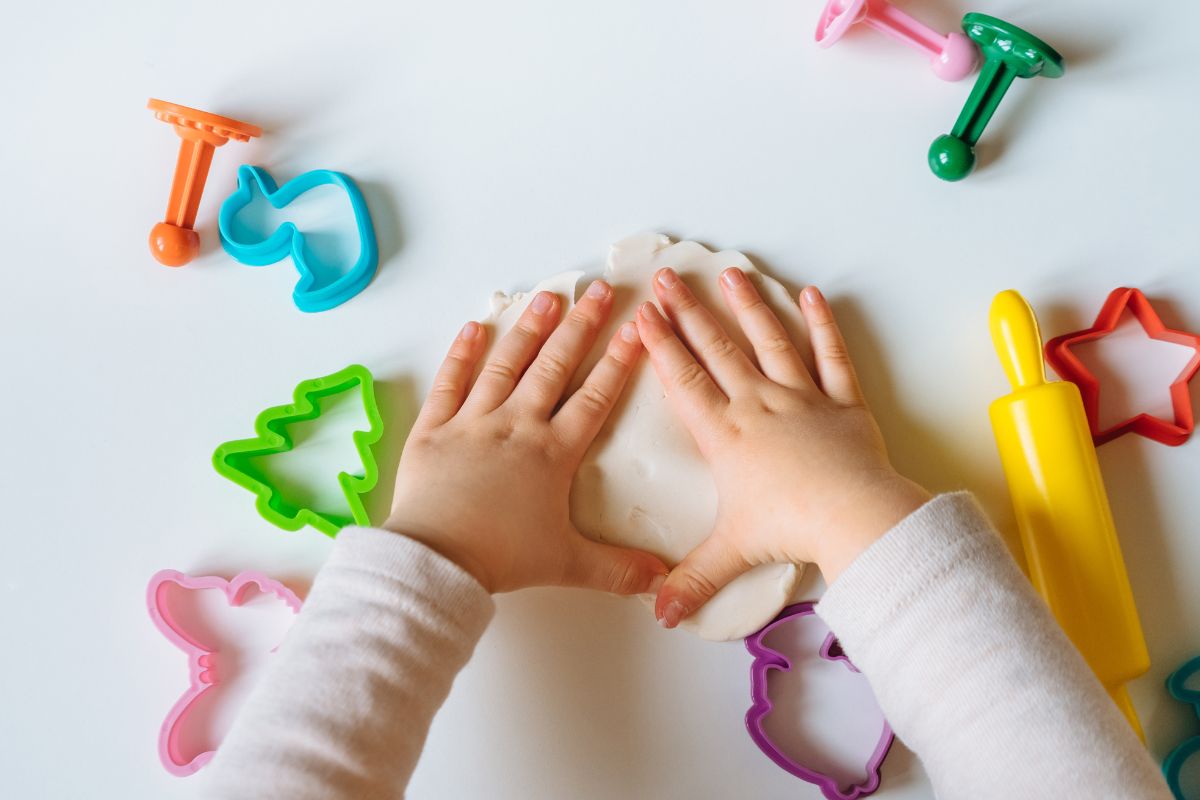

Playdough play can have a significant role in developing cognitive skills in young children. The process of manipulating playdough requires children to use their senses, which helps improve their ability to perceive and understand the world around them. Here are some ways playdough play can help develop cognitive skills:
Problem-solving skills: Playdough play encourages children to experiment and explore new ideas. They can experiment with different shapes, colors, and textures to create new objects, which helps develop their problem-solving skills.
Creativity: Playdough play allows children to express their creativity and imagination, and it encourages them to think outside the box. They can create different shapes, animals, and objects with playdough, which helps improve their creativity.
Math skills: Playdough play can also help develop early math skills. Children can use play dough to learn about numbers, counting, and basic shapes. They can also use small objects, such as pony beads or craft sticks, to create patterns and practice one-to-one correspondence.
Language development: Playdough play can also help develop language skills. Children can use play dough to create objects related to a specific theme, such as food or animals. As they play, they can learn new words and develop their vocabulary.
Spatial awareness: Playdough play requires children to use their hands and fingers to manipulate the dough and create objects. This helps improve their spatial awareness and hand-eye coordination.
Overall, playdough play can provide children with hands-on experiences that promote cognitive development in a fun and engaging way.
Fine Motor Development with Playdough
One of the most important benefits of playdough play is the development of important fine motor skills. Fine motor skills involve the use of small muscles in the hands and fingers, which are essential for many everyday tasks such as writing, buttoning clothes, and using utensils.
Playdough activities provide a fun way for children to strengthen their hand and finger muscles. Rolling small balls, manipulating small objects such as pony beads, and cutting playdough with cookie cutters are all great ways to develop hand strength and dexterity. Using craft sticks, spaghetti noodles, or small toys as tools for playdough play can also help develop hand-eye coordination and bilateral coordination skills.
Playdough play also promotes the development of the pincer grasp, which is the ability to pick up small items using the index finger and middle fingers. As children squish and shape playdough, they can also develop finger strength, which is important for fine motor control.
Fun Play Dough Activities for Fine Motor Work
There are a lot of fine motor activities that can be done with play dough. Here are some fun playdough activities that promote fine motor development:
- Playdough balls: Roll small balls of playdough and press them onto a flat surface to make designs or patterns.
- Play dough task cards: Create task cards with different shapes or objects and ask children to make them with the play dough.
- Play dough mats: Use playdough mats with different themes or concepts to promote one-to-one correspondence, problem-solving, and math skills.
- Easter eggs: Hide small objects inside a batch of playdough eggs and ask children to find them using their pincer grasp.
- Color playdough: Use different colors of playdough to make a rainbow or color matching activity.
- Homemade playdough: Make your own playdough with a simple playdough recipe and add different scents or textures for a sensory experience.
- Fine motor tubs: Fill small containers with different small objects such as beads, small toys, or craft sticks and ask children to manipulate them with the play dough.
Play Dough Play Add-ins
There are lots of small toys that make great additions to play dough playtime. You can add in cars and trucks with larger wheels (Matchbox cars may get dough stuck in their underside), small kitchen set toys, miniature plastic animals from a farm or zoo set, and other small figures. You can also add buttons of different shapes and sizes, pipe cleaners twisted into fun shapes, small craft sticks, small beads or pom-poms in various colors, coins for pretend play baking activities, and more! Have children use the items to create imaginary scenes, buildings, and more during their play.
They can use the objects as stamps to make patterns in the dough, or roll them into balls and snakes. Make it a challenge by having them attempt to get all of one color together in one area or shape. Or try having them count out an exact number of each item while arranging them in a pattern or design. The possibilities are endless! Encourage children to come up with their own ideas and use their imaginations as they explore the materials. Let them know that there are no wrong answers and be sure to recognize their creativity!
Playdough play is a perfect way to promote fine motor development in young children. It’s a fun and hands-on way for children to develop their hand and finger muscles, hand-eye coordination, and pincer grasp. With different colors, small objects, and creative ways to use playdough, children can engage in free play while promoting important skills for their development.
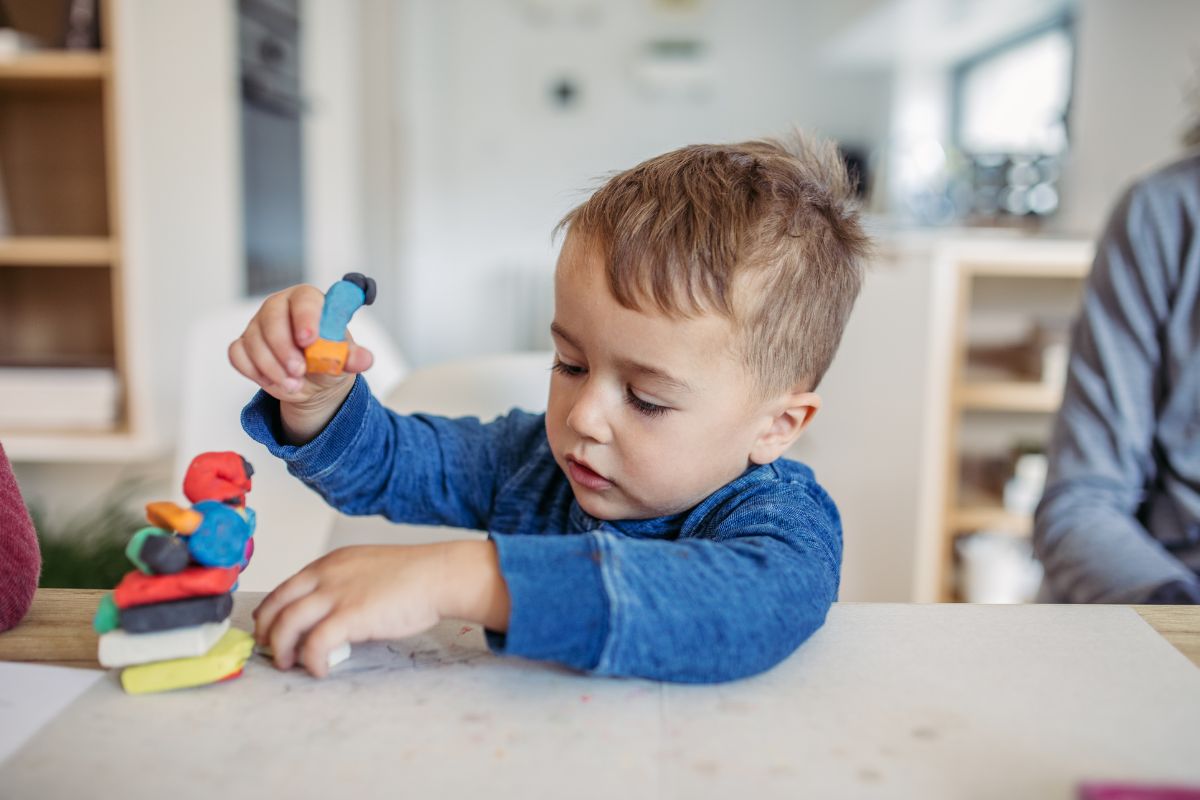

Homemade Play Dough Recipes
After working in a preschool classroom and having children of my own, it’s always good to have a play dough recipe or two up your sleeve. Here are some of my tried and true play dough recipes that are safe for little hands.
Here is a simple and easy homemade playdough recipe:
Ingredients:
- 2 cups all-purpose flour
- 1/2 cup salt
- 2 tablespoons cream of tartar
- 2 tablespoons vegetable oil
- 1.5 cups boiling water
- Food coloring (optional)
Instructions:
- In a large bowl, mix together the flour, salt, and cream of tartar.
- Add the vegetable oil and boiling water to the bowl and mix until the dough forms.
- If using food coloring, add a few drops to the dough and mix until the color is evenly distributed.
- Knead the dough for a few minutes until it becomes smooth and pliable.
- Store the playdough in an airtight container or resealable bag.
Tips:
- If your playdough is too dry, add a few drops of water and knead until it becomes pliable.
- If your playdough is too sticky, add a little more flour and knead until it becomes smooth.
This recipe makes a large batch of playdough, so you can divide it into smaller portions and add different food coloring to each one to create a variety of colors for your little ones to play with.
